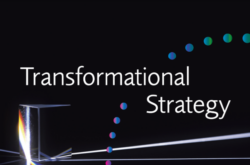Expanded Descriptions of the ToP Focused Conversation Method
Brief description
The ToP focused conversation method helps people reflect together on any subject. It has been used in a wide variety of situations, ranging all the way from finding the core idea for a marketing strategy to discussing the meaning and personal implications of a movie, a painting or a novel. A series process with of questions generate a conversation that flows from the surface to the depth of a topic.
Each conversation is tailored with specific questions to move a group through four levels to meet a rational aim or product as well as an experiential or existential aim.
First a context is set, which includes introducing a concrete, tangible beginning point, such as a paper, presentation or shared experience related to the topic to be discussed. Then objective questions are asked that draw out observations and data about that concrete object or experience. Next, reflective questions draw out participants’ reactions, memories or associations that are triggered by that object. Then, interpretive questions help people discern meaning as they draw out connections, implications, stories or the significance of the topic, building on the observations and reactions that have been shared. Finally, the decisional questions draw the conversation to a close by summarizing, stating next steps, or articulating a profound insight.

Figure 1: Illustration of the flow of the focused conversation method. Read it as an animated diagram, starting from the left.
Figure 1 illustrates the sentence from Kierkegaard that was discussed in Chapter 2 (see “The Dynamics of Being”). The straight lines on the left stand for the basic awareness of a bundle of facts about anything in relationship to each other. The first reflexive arrow portrays the awareness of one’s immediate internal response to the encounter with the facts: the associations, images and reactions that are triggered by those facts. The second arrow portrays standing back one more step and consciously examining the meaning of the situation, which is built on both the set of facts and the internal reactions to them. The final arrow points back to everything before it and represents taking yet one more step back to name a conscious relationship to the whole situation.
A Whole-System Process
This four-stage tool is a total process. It uses all the resources of body and mind to come to terms with the object: the senses, memories and feelings. It uses both intuition and reason. It involves the volitional faculty to push the process through to decisions. In this sense, the focused conversation is a whole-system tool. To borrow a concept from Susanne Langer, the method “subjectifies the outward and objectifies the inward.” It imbues what is outside the self with feeling and meaning. Inside, it can bring to the surface emotions and insights, which normally would not see the light of day.
Level 1, the OBJECTIVE level, focuses on sensory information, facts and basic information. This stage is about being aware of the phenomena, or what is going on. The intentional focus is directing our consciousness toward what is going on around us. Radical openness at this level is not making assumptions about connections or meaning of the phenomena we are observing. The method of inquiry at this stage is observation.
At the objective level the focused conversation method uses a number of ways to focus awareness on what is going on.
Observing sensory experience
At the most basic stage the objective level is about observing, bringing to consciousness all of what is going on, or identifying the aspects of a phenomenon. In a conversation, this involves asking questions that allow each participant to share their observations, so they become a part of the experience of the whole group. Depending on what is being observed, the facilitator might ask for visual observations¾colours, shapes, textures, sizes, or objects (which may include words or phrases on a page). Or the questions might ask for auditory impressions from an object or experience, such as sounds, words or phrases that were heard. For some situations, questions might ask for physical sensations such as smell, taste, or tactile impressions.
Recalling
Recalling things that actually happened is another element of observation—describing observed events, actions taken, past experience. Participants might recall the parts of a story—the characters, scenes and obvious plot lines, as in “what happened first, next, and then . . . .” Or they might remember the actions actually taken in a project or what happened in an event.
Highlighting facts and thoughts
At this level of the objective phase, a bit of selection begins to surface. People are asked for facts, statistics or basic information, words or phrases that stood out for them, what caught their attention in a paper or presentation, or a list of the elements within a whole.
Grounding in phenomena
Sometimes it helps to name examples of a concept, grounding the abstraction in real phenomena. Describing the aspects of an idea can also be objective information, although explaining the significance of the idea would be at the interpretive level.
Generating ideas
An interesting manifestation of the objective level is getting participants to articulate ideas or thoughts that are already present in their minds. The facilitator might ask for responses to a brainstorm question, or ask people to share existing thoughts or an idea they have been pondering.
Level 2, the REFLECTIVE level, is about associations, connections, feelings and initial reactions. It is about drawing out and articulating the internal responses to what has been observed at the objective level. Here intentional focus is directed toward being conscious of our internal responses, and radical openness is observing our own responses and those of others without judgement. The method of inquiry is observation, now directed inward.
The reflective level can draw out a variety of responses.
Associations
Reflective questions draw out internal reactions and responses triggered by the objective data. Some of these responses are impressions, such as “it seems like X”, or “this color—this sound—this experience—reminds me of Y”. Or questions may draw out related mental images—“it reminds me of Z” or impressionistic similarities and differences. Questions might also draw out memories (which are more personal and less descriptive than the simple “recalling” of the previous level). These memories can range from experiences, to visual images, to vignettes of their own past experience. Questions may also draw out related ideas, connections, similarities, or themes at a very personal, immediate, or “gut” level. These are not the carefully considered connections or themes at the next, interpretive, level.
Emotions
When appropriate, questions can draw out participants’ initial reactions and responses, remembered personal feelings and emotional states, observed feelings and the emotions they saw in others or in literature. Questions can also get people to describe how something affects them or the phenomena under consideration.
Initial attitude
Related to associations and emotions, questions might elicit reactions such as surprise, shock, or confusion, and sometimes bewilderment. Some examples of such questions ask about what is easy or difficult to grasp, or what people like or dislike, or high points and low points, or what part causes shame or pride. Other questions can be about immediate personal connections—what part of this one identifies with, or where they are drawn in, caught up, fascinated, repelled, or intrigued.
Projecting impressions
Approaching the interpretive level, it may be appropriate to draw out worries, concerns, and challenges, intuitions or extrapolations about possibilities or opportunities. Questions may also ask for important or powerful aspects of a phenomenon, or indications of critical elements. As long as these are internal reactions and not yet making definitive statements of value, they are still at the reflective level, and help bridge from reflective to interpretive.
Level 3, the INTERPRETIVE Level, addresses meaning, values, solutions and implications. At this stage, both the external data from the objective level and the internal responses from the reflective level become valuable sources of information that help people understand the meaning of a situation or phenomena. Now the intentional focus is about directing our consciousness toward deriving meaning and significance from the external and internal information we have acknowledged in the first two levels. Radical openness at this level is about exploration of possible connections and meanings. This is where specific methods of inquiry are useful to move towards the aim of the conversation.
The interpretive level of the conversation can involve several elements.
Understanding
Questions of understanding might introduce the interpretive stage. Examples might be “How did this come about?” or “What are the key points of this paper?” Answers at this level are beyond observation alone, and begin to pull together a comprehensive understanding of the topic.
Reference points
Questions might ask participants to articulate their relationship to past events, attempts, knowledge, resources or accomplishments. They might also include comparisons or connections between elements, or to other topics. This stage contains an element of learning, of making new connections to previous experiences.
Exploring meaning and significance
At the heart of the interpretive level are questions of meaning and significance, such as “What implications does this have for us?” “What implications does this have beyond ‘us’ to the larger context?” “What is the importance of this situation?” “What can we learn from this situation?” “What are the positives and negatives of each option?” Sometimes a question such as “What message might this story have for our situation?” draws out profound insight into the meaning of life.
Purpose and intention
Here questions begin to elicit the “Why” of the situation, such as “Why did this happen?” or “Why would we go in a certain direction?” They may elicit the relationship of a particular proposal to the mission of the organization, or the possible positive and negative impacts of a possible strategic direction.
Toward the future
This stage begins to bridge to the decisional level of the conversation. Questions may elicit lists of options, opportunities or possible solutions. In the case of options, it can be useful to explore the meaning and significance of each option before moving to the next level.
Level 4, the DECISIONAL level, focuses on resolution, direction and action. It draws together all of the information, reactions and exploration of the previous levels. Sometimes it can also draw out the transformational impact of the conversation, if this is the aim. The intentional focus at this stage is directed toward summarizing or acting upon the insights explored in the interpretive level. Letting go of previous assumptions, we make decisions in radical openness to what we have discovered. The method of inquiry is eliciting levels of resolve, both in the sense of commitment and the sense of closure.
It’s useful to consider the nature of different levels of decisions.
Resolution
Bringing the discussion to closure is the most surface part of the decisional level. The facilitator might simply draw the conversation to a close, or ask the group to summarize a decision or a consensus that has become obvious through the conversation.
Direction
Sometimes a topic only needs to be resolved with a high level direction, to be planned in more detail later.
Action
If the aim of the conversation is to create action, questions at this point ask the group to articulate what the next steps are. Group commitment to action may be needed, or perhaps individual commitment to action. Questions should elicit the appropriate level of response.
Transformational impact
Sometimes the intent of a conversation is to have a transformational impact on a group, to shake up their world so they can make a conscious change in their operating images or how they relate to each other or to life. In this case, questions can help people articulate a personal insight or what impact the topic or the conversation has on them. Questions that ask people to name an art form, or briefly summarize a situation may help them choose how they are going to relate to it.
For more on this topic, you can purchase Getting to the Bottom of ToP from iUniverse at https://www.iuniverse.com/Bookstore/BookSearchResults.aspx?Search=Getting%20to%20the%20Bottom%20of%20ToP





